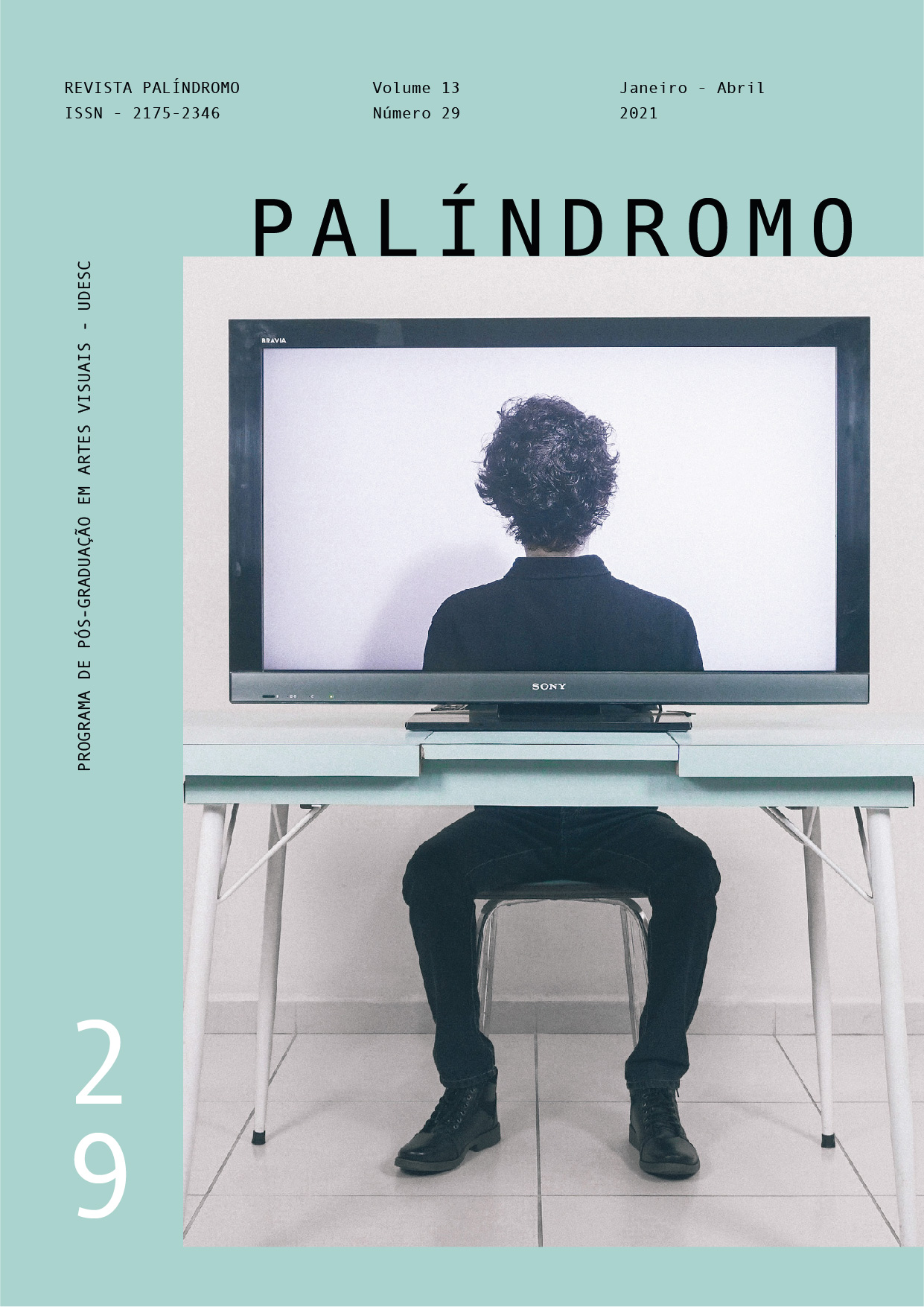A arte da performance e a estética em Merleau-Ponty:
rupturas, fronteiras e expressão.
DOI:
https://doi.org/10.5965/2175234613292021119Parole chiave:
Arte da Performance, Merleau-Ponty, expressão, fronteira, ruptura.Abstract
O presente artigo objetiva discutir o fenômeno expressivo da Arte da Performance, a partir dos pressupostos de uma teoria da expressão estética presente na filosofia de Merleau-Ponty. Para tanto, em um primeiro momento reflete-se acerca das noções de ruptura e fronteira presentes na Arte da Performance, à luz do método fenomenológico utilizado por Merleau-Ponty, a épokhe; em seguida, intenta-se aproximar a análise dos textos estéticos de Merleau-Ponty, na perspectiva de uma teoria do estilo, e o fenômeno expressivo presente na Arte da Performance. Constata-se que é na análise da potência criativa de re-criar o mundo, identificada na pintura de Cézanne, na linguagem e no enigma da visão, que Merleau-Ponty desenvolve uma teoria estética do estilo. A noção de estilo emerge nos ensaios merleau-pontyanos como capacidade de entrelaçamento de uma dimensão pessoal com uma dimensão universal, ou ainda, como expressão do ser com o mundo. A Arte da Performance enquanto arte de fronteira, híbrida em linguagens e fundada no aqui e agora da corporeidade encarnada, realiza em sua atividade o fenômeno expressivo presente na teoria da expressão estética de Merleau-Ponty.
Downloads
Riferimenti bibliografici
CARDIM, L. N. A ambigüidade na Fenomenologia da Percepção de Maurice Merleau-Ponty. USP. São Paulo, 2007. Disponível em: http://filosofia.fflch.usp.br/sites/filosofia.fflch.usp.br/files/posgraduacao/defesas/2007_docs/doc_leandroCardim_07.pdf. Acesso em: 05 mar. 2019.
COHEN, R. Performance como linguagem.Criação de um tempo-espaço de experimentação.1ª Edição. São Paulo: Perspectiva, 2002. 176 p.
GLUSBERG, J. A arte da performance.Tradução de Renato Cohen.1ª Edição. São Paulo: Perspectiva, 2005. 145 p.
MATTHEWS, E. Compreender Merleau-Ponty.2ª Edição. Petrópolis: Vozes, 2011. 205 p.
MERLEAU-PONTY, M. Fenomenologia da Percepção. Tradução de Carlos Alberto Ribeiro de Moura. 2ª Edição.São Paulo: Martins Fontes, 1999.
_____________, A Dúvida de Cézanne. Tradução de Nelson Alfredo Aguillar. In. Merleau-Ponty. 2ª Edição.São Paulo: Martins Fontes, 1984.
_____________, O olho e o espírito. Tradução de Maria Ermantina Pereira. 1ª Edição. São Paulo: Cosac Naify, 2004.
_____________, A linguagem indireta e as vozes do silêncio. Tradução de Carlos Alberto Ribeiro de Moura. In. Signos. 1ª Edição. São Paulo: Martins Fontes, 1994.
Downloads
Pubblicato
Come citare
Fascicolo
Sezione
Licenza
Copyright (c) 2020 Adrielle Druciak

TQuesto lavoro è fornito con la licenza Creative Commons Attribuzione 4.0 Internazionale.
DECLARAÇÃO DE DIREITOS AUTORAIS
a. Os artigos publicados pela revista são de uso gratuito, destinados a aplicações acadêmicas e não comerciais. Todos os direitos autorais são atribuídos à revista. Os artigos cujos autores são identificados representam a expressão do ponto de vista de seus autores e não a posição oficial da Revista Palíndromo. O (s) autor (es) compromete-se sempre que publicar material referente ao artigo publicado no Palíndromo mencionar esta publicação da seguinte forma:
Este artigo foi publicado originalmente pela revista Palíndromo em seu volume (coloque o volume), número (coloque o número) no ano de (coloque o ano) e pode ser acessado em: http://www.revistas.udesc.br/index.php/palindromo
b. Plágio, em todas as suas formas, constitui um comportamento antiético de publicação e é inaceitável. A revista Palíndromo utiliza o software iThenticate de controle de similaridade


